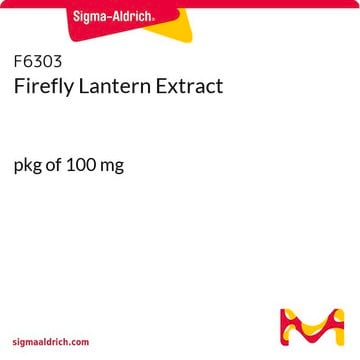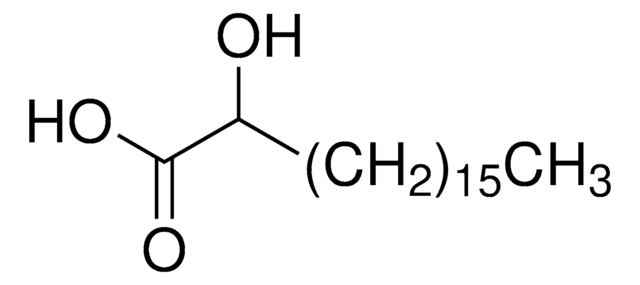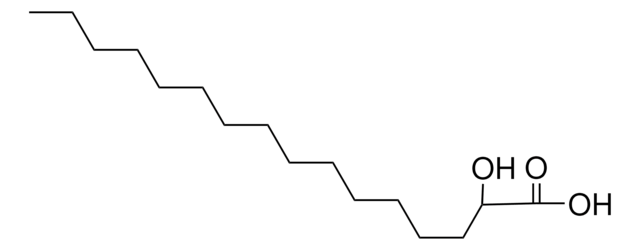H3648
(±)-3-Hydroxydecanoic acid
≥98%
Synonym(s):
DL-β-Hydroxycapric acid
Sign Into View Organizational & Contract Pricing
All Photos(1)
About This Item
Empirical Formula (Hill Notation):
C10H20O3
CAS Number:
Molecular Weight:
188.26
MDL number:
UNSPSC Code:
12352211
PubChem Substance ID:
NACRES:
NA.25
Recommended Products
Assay
≥98%
form
powder
functional group
carboxylic acid
lipid type
saturated FAs
shipped in
ambient
storage temp.
2-8°C
SMILES string
CCCCCCCC(O)CC(O)=O
InChI
1S/C10H20O3/c1-2-3-4-5-6-7-9(11)8-10(12)13/h9,11H,2-8H2,1H3,(H,12,13)
InChI key
FYSSBMZUBSBFJL-UHFFFAOYSA-N
Application
- LORE receptor homomerization is required for 3-hydroxydecanoic acid-induced immune signaling and determines the natural variation of immunosensitivity within the Arabidopsis genus.: This study unveils the crucial role of 3-Hydroxydecanoic acid in mediating immune responses through LORE receptor homomerization in plants, providing insights into the molecular mechanisms of plant defense and potential agricultural applications (Eschrig et al., 2024).
Storage Class Code
11 - Combustible Solids
WGK
WGK 3
Flash Point(F)
Not applicable
Flash Point(C)
Not applicable
Personal Protective Equipment
dust mask type N95 (US), Eyeshields, Gloves
Certificates of Analysis (COA)
Search for Certificates of Analysis (COA) by entering the products Lot/Batch Number. Lot and Batch Numbers can be found on a product’s label following the words ‘Lot’ or ‘Batch’.
Already Own This Product?
Find documentation for the products that you have recently purchased in the Document Library.
Customers Also Viewed
A Hiraishi et al.
Antonie van Leeuwenhoek, 61(3), 231-236 (1992-04-01)
Nine Zoogloea strains including the type strain of Z. ramigera (IAM 12136 = ATCC 19544 = N.C. Dondero 106) and newly isolated strains were investigated for isoprenoid quinone composition and whole-cell fatty acid profiles. Seven of the tested strains, having
Highly regioselective Vilsmeier-Haack acylation of hexahydropyrroloindolizine.
B Sayah et al.
The Journal of organic chemistry, 66(7), 2522-2525 (2001-04-03)
Hannes Löwe et al.
Biotechnology for biofuels, 10, 190-190 (2017-08-18)
One of the major challenges for the present and future generations is to find suitable substitutes for the fossil resources we rely on today. Cyanobacterial carbohydrates have been discussed as an emerging renewable feedstock in industrial biotechnology for the production
Robert K Ernst et al.
The Journal of infectious diseases, 196(7), 1088-1092 (2007-09-01)
Three structural features of lipid A (addition of palmitate [C16 fatty acid], addition of aminoarabinose [positively charged amino sugar residue], and retention of 3-hydroxydecanoate [3-OH C10 fatty acid]) were determined for Pseudomonas aeruginosa isolates from patients with cystic fibrosis (CF;
B Füchtenbusch et al.
Applied microbiology and biotechnology, 53(2), 167-172 (2000-03-10)
Screening experiments identified several bacteria which were able to use residual oil from biotechnological rhamnose production as a carbon source for growth. Ralstonia eutropha H16 and Pseudomonas oleovorans were able to use this waste material as the sole carbon source
Our team of scientists has experience in all areas of research including Life Science, Material Science, Chemical Synthesis, Chromatography, Analytical and many others.
Contact Technical Service


![Poly[(R)-3-hydroxybutyric acid] natural origin](/deepweb/assets/sigmaaldrich/product/structures/129/476/7d1c924b-f644-4889-a2d6-d7a923ce382c/640/7d1c924b-f644-4889-a2d6-d7a923ce382c.png)









